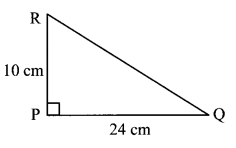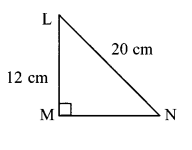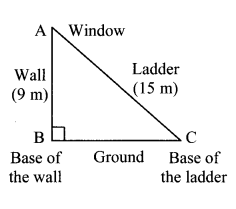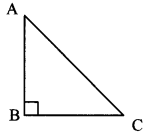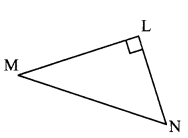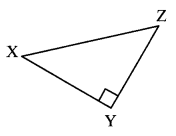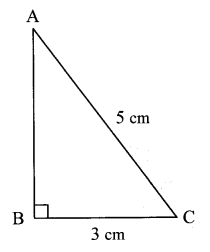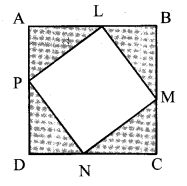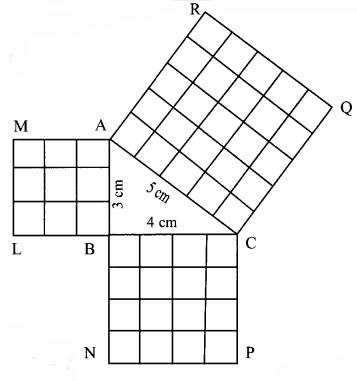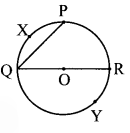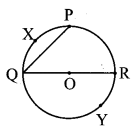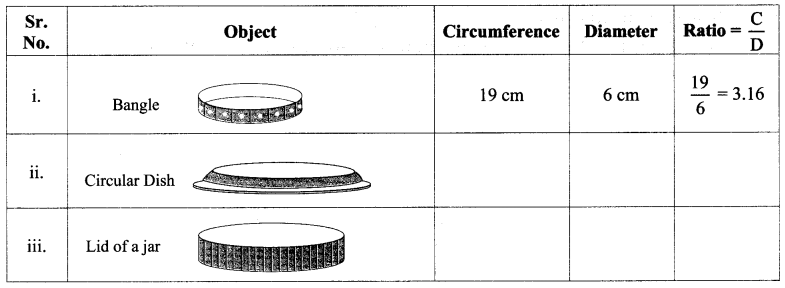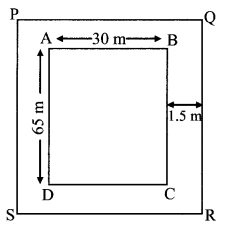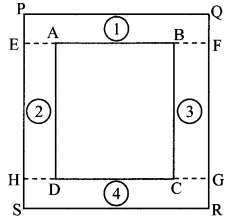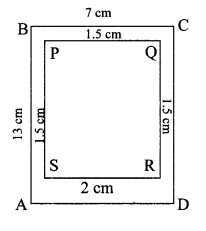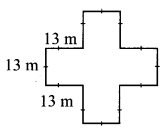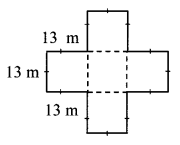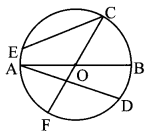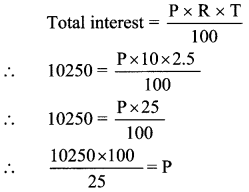Balbharti Maharashtra State Board Class 7 Maths Solutions covers the 7th Std Maths Practice Set 49 Answers Solutions Chapter 13 Pythagoras Theorem.
Pythagoras Theorem Class 7 Practice Set 49 Answers Solutions Chapter 13
Question 1.
Find the Pythagorean triplets from among the following sets of numbers:
i. 3,4,5
ii. 2,4,5
iii. 4,5,6
iv. 2,6,7
v. 9,40,41
vi. 4,7,8
Solution:
i. 3² = 9,4² = 16, 5² = 25
Now, 9 + 16 = 25
∴ 3² + 42 = 5²
∴ 3, 4 and 5 is a Pythagorean triplet.
ii. 2² = 4, 4² = 16, 5² = 25
But, 4 + 16 ≠ 25
∴ 2² + 4² ≠ 5²
∴ 2, 4 and 5 is not a Pythagorean triplet.
iii. 4² = 16, 5² = 25, 6² = 36
But 16 + 25 ≠ 36
∴ 4² + 5² ≠ 6²
∴ 4, 5 and 6 is not a Pythagorean triplet.
iv. 2² = 4, 6² = 36, 7² = 49
But, 4 + 36 ≠ 49
∴ 2² + 6² ≠ 7²
∴ 2, 6 and 7 is not a Pythagorean triplet.
v. 9² = 81, 40² = 1600,41² = 1681
Now, 81 + 1600 = 1681
∴ 9² + 40² = 41²
∴ 9,40 and 41 is a Pythagorean triplet.
vi. 4² = 16, 7² = 49, 8² = 64
But, 16 + 49 ≠ 64
∴ 4² + 7² ≠ 8²
∴ 4, 7 and 8 is not a Pythagorean triplet.
Question 2.
The sides of some triangles are given below. Find out which ones are right-angled triangles?
i. 8,15,17
ii. 11,12,15
iii. 11,60,61
iv. 1.5, 1.6, 1.7
v. 40, 20, 30
Solution:
i. 8² = 64, 15² = 225, 17² = 289
Now, 64 + 225 = 289
∴ 8² + 15² = 17²
The above expression is of the from (hypotenuse)² = (base)² + (height)²
∴ The sides of lengths 8,15,17 will form a right-angled triangle.
ii. 11² = 121, 12² = 144, 15² = 225
But, 121 + 144 ≠ 225
∴ 11² + 12² ≠ 25²
∴ The above expression is not of the from
(hypotenuse)² = (base)² + (height)²
∴ The sides of lengths 11, 12, 15 will not form a right-angled triangle.
iii. 11² = 121, 60² = 3600, 61² = 3721
Now, 121 +3600 = 3721
∴ 11² + 60² = 61²
∴ The above expression is of the from
(hypotenuse)² = (base)² + (height)²
∴ The sides of lengths 11, 60, 61 will form a right-angled triangle.
iv. 1.5² = 2.25, 1.6² = 2.56, 1.7² = 2.89
But, 2.25 + 2.56 ≠ 2.89
∴ 1.5² + 1.6² ≠ 1.7²
∴ The above expression is not of the from
(hypotenuse)² = (base)² + (height)²
∴ The sides of lengths 1.5, 1.6, 1.7 will not form a right-angled triangle.
v. 40² = 1600, 20² = 400, 30² = 900
But, 400 + 900 ≠ 1600
∴ 20² + 30² ≠ 40²
∴ The above expression is not of the from (hypotenuse)² = (base)² + (height)²
∴ The sides of lengths 40, 20, 30 will not form a right-angled triangle.
Maharashtra Board Class 7 Maths Chapter 13 Pythagoras’ Theorem Practice Set 49 Intext Questions and Activities
Question 1.
From the numbers 1 to 50, pick out the Pythagorean triplets. (Textbook pg. no. 90)
Solution:
- 3,4,5
- 5,12,13
- 7,24,25
- 8,15,17
- 9,40,41
- 12,35,37
- 20,21,29

